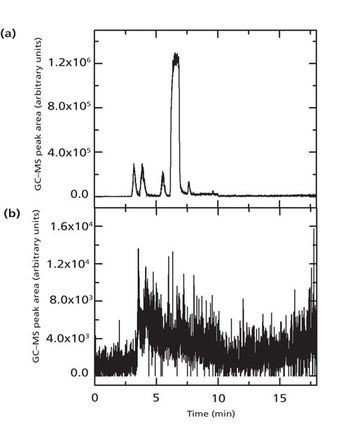
LCGC North America
A reader’s problem of a method that fails the repeatability of the system suitability test serves as an example of how to approach LC method troubleshooting.

LCGC North America
A reader’s problem of a method that fails the repeatability of the system suitability test serves as an example of how to approach LC method troubleshooting.

LCGC North America
How to optimize the key variables in LC–MS analysis

LCGC North America
Solid-phase microextraction (SPME) in conjunction with gas chromatography–mass spectrometry (GC–MS) is a simple and effective way to sample analytes. Ordinarily the coated fiber is rid of compounds during desorption in the GC, allowing for the analysis of a new sample. Carryover of the analyte between samples, however, is a problem with many chemicals. Our data shows that heating the fiber in a high temperature injection port for only 2 min between runs prevents carryover. The short heating between samples improves the linearity of the peak area versus concentration relationship over four orders of magnitude of concentration, with a limit of detection below 10-7 M in every case. Although carryover is an acknowledged problem with SPME fibers, such short conditioning steps are rarely considered as a means to eliminate it; this study suggests that they should be evaluated as an option.

LCGC North America
Part II of this series describes additional features of the HPLC Teaching Assistant software, including the possibility to simulate the impact of the mobile phase temperature on HPLC separations; understand the chromatographic behavior of a mixture of diverse compounds in both isocratic and gradient elution modes; show the influence of instrumentation (injected volume and tubing geometry) on the kinetic performance and sensitivity in HPLC; and demonstrate the impact of analyte molecular weight on thermodynamic (retention and selectivity) and kinetic (efficiency) performance.

LCGC North America
Interest in chromatography using hydrophilic interaction liquid chromatography (HILIC) has continued to build in recent years. Adoption of the technique has been slowed by experiences of poor reproducibility. In particular, re-equilibration times in HILIC have been reported as being exceptionally long as compared to reversed-phase chromatography. In this study, re-equilibration times in HILIC, for both aqueous–organic gradients and buffer gradients are systematically explored. The results not only promise to improve method development practices, but also provide insight into HILIC retention mechanisms across mechanistically differing polar stationary phases.

LCGC North America
Lawrence W. Potts, Emeritus Prof. of Chemistry, Gustavus Adolphus College reviews Mark F. Vitha's new book from Wiley, "Chromatography: Principles and Instrumentation."

LCGC North America
Click the title above to open the LCGC North America December 2016 regular issue, Vol 34 No 12, in an interactive PDF format.